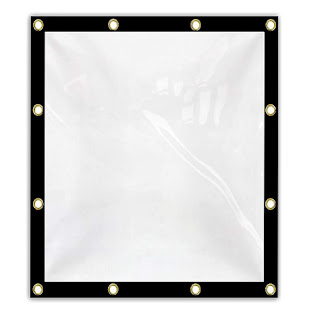Heavy Duty Tarpaulins Properties | Tarpaulins Shop
Shopping for strong, dependable tarpaulins for applications that require extreme durability isn't easy. There are no rules governing what is considered a lightweight tarp and what are considered heavy duty tarpaulins, so you need to be aware of the various ways in which the relative strength and durability of a tarpaulin can be gauged. Keep in mind that you will also need to evaluate features such as the backing, color, grommets, and whether it is waterproof or not before purchasing.
How Are Heavy Duty Tarps Designated?
There is no cut-off in terms of weight or strength that is used to determine whether a tarp is heavy duty, although there are some general guidelines. To determine whether you're considering the right product, you should evaluate the overall weight, the denier (the thickness of the material) and the weave (a tighter weave makes tarpaulins stronger).
Understanding Weight, Denier and Weave
A weave of 10x8 is considered lightweight. This will be relatively thin material that's fine for jobs such as providing a bit of shade, but it won't work for sturdier jobs like protecting your home from the elements if you're in the middle of a home remodeling project. Instead, look for heavy duty tarps with a weave of at least 14x14. The tighter weave will keep out dust and water so that things stay clean and dry. The denier of these tarpaulins is generally thick enough that you can't see light through the material when it's held up to the sun. Be sure to check this, particularly if you're going to be using the material to line a temporary ice skating rink in the winter or to cover a truckload of supplies or other merchandise. A thicker denier will be able to withstand sun, rain and snow even when your truck is rolling down the highway at high speed.
Look For The Right Finishing Touches
Even if you're looking at a few excellent, heavy duty tarpaulin that are thick and have a tight weave, you may not have considered everything that's important in choosing the right tarpaulin. For instance:
• Are the hems finished and reinforced? If not, they could quickly fray and unravel
• Are there evenly spaced grommets around the edge so that you can tie the tarpaulin down? You don't want it blowing away with a gust of wind. The best tarpaulins will have brass grommets every 18 inches that are reinforced for added strength.
• Reinforced grommets at the corners are also crucial for tying down the tarpaulin properly.
• Are they laminated? For some projects, you'll want them to be laminated on both sides, while for others, lamination on one side will be sufficient. At least one side should be laminated to stand up to abrasion and wear.
Finally, always buy from a reputable company that has been in business for several years and that has customer service representatives available online or by phone to answer your questions and suggest the best heavy duty tarps for your needs.




Comments
Post a Comment